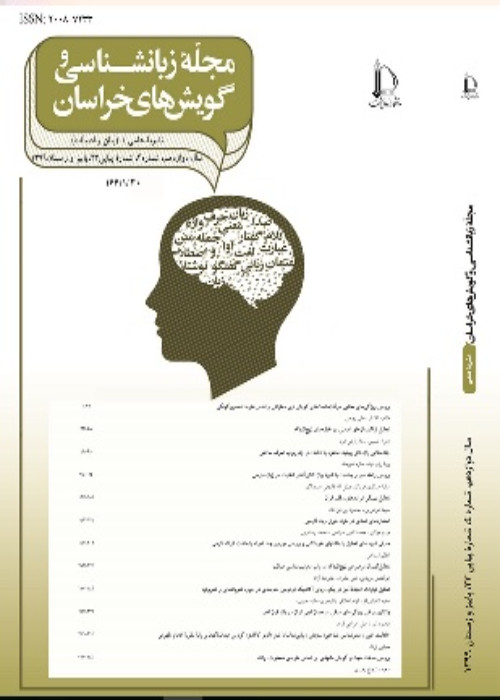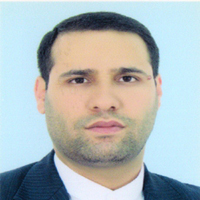A Comparison of Grammatical Mechanisms of Persian Scientific Language in Physics, Chemistry, Linguistics, and Politics Articles during the Past Three Decades
Author(s):
Article Type:
Research/Original Article (دارای رتبه معتبر)
Abstract:
Introduction
According to the studies, the grammatical metaphor has a special significance in the development of scientific writings, and it is one of the most important characteristics of the scientific language. The purpose of this study is to investigate the Persian language based on the systemic functional linguistics framework and it will attempt to answer the fundamental question that how many types of metaphorical processes have been used in the scientific articles in various disciplines including physics, chemistry, linguistics, and political sciences within three decades. The second goal is to compare the results of all four disciplines in different decades, in order to determine the development of these mechanisms in the scientific discourse of the Persian language at different decades.
Theoretical Framework
The basic roles of grammatical phenomena according to systemic functional linguistics are described through three meta-functions: ideational (consisting of empirical and logical cases), interpersonal, and textual. The whole model of systemic functional linguistics is based on the relationship and interaction between these three meta-functions. The ideational meta-function has to do with how we construe our human experience in and of reality through language. The interpersonal meta-function views language as interaction. The textual meta-function is concerned with the textual organization of the language. The ideational meta-function relates to the clause through which experience is seen as being encoded in language as processes, participants in these processes and circumstances. Each of these meta-functional representations of language can be expressed through metaphorical expressions. Halliday (2004) considers grammatical metaphor as the most important feature in describing the language of science and emphasizes that many features of the language of science are the result of grammatical metaphor.
Methodology
The present study is a descriptive-comparative study whose structure consists of four sets of research papers related to the fields of physics, chemistry, linguistics, and political sciences.60 Persian academic articles from reputable journals were chosen for analysis. Each field is divided into the groups of 15 articles and each group is divided into three groups of 5 articles devoted to 1981-2011 in three decades.
First, the number of the occurrence of metaphorical grammatical expressions in each text was determined, and congruent equivalent for each was presented. After analyzing the grammatical metaphors of selected articles in this way, the frequency of occurrence of each type of metaphors was obtained through the division of grammatical metaphors by the total words in the whole text and, accordingly, the average percentage of the use of metaphorical grammatical expressions in each text were assessed. The results of the calculations were compared using independent t-test using SPSS software. In this research, the significance level is less than 0.05.
Results and Discussion
Based on these findings, metaphors type (2, 10, 5, and 6) were the most frequent metaphors respectively, and type (7, 11, 4, and 12) were the least frequent ones respectively. Chemistry has the most use of metaphorical mechanisms, and physics, political science, and linguistics are ranked next. In addition, the results, on the one hand, show that the ratio of the general use of the type of grammatical metaphors contained in the experimental texts (chemistry and physics) is significantly more than the human sciences (political science and linguistics). On the other hand, the political science text (human sciences) with the average of 5/07 grammatical metaphors are not much different from the average of 5/09 physics texts (experimental science). In addition, the order of frequency occurrence of different metaphors in this field is the same as physics and chemistry. According to the results, "apparently" there is no direct connection between the scientific nature of a field and the application of metaphor.Conclusion and Suggestions
The finding of present study showed the order of the occurrence of grammatical metaphors in each text was as follow: 2 > 10> 5> 6> 1> 9> 8> 3> 12> 4> 11> 7. In addition, it showed that the order of fields in using the most number of metaphorical processes is as follows: chemistry> physics> political science> linguistics. Findings of the research do not show a direct relation between the scientific nature of these disciplines and the application of grammatical metaphor. In addition there is also no significant difference in the number of grammatical metaphors diachronically.
The findings of this research can be used in determining the promotion extent of the status of Persian language among the international scientific languages, which is one of the eight major objectives in the comprehensive scientific map of the country. In addition, the findings of this research can be used in various fields including planning, teaching and writing scientific texts to teach the Persian language to non-Persian speakers.
Keywords:
Language:
Persian
Published:
Journal of Linguistics & Khorasan Dialects, Volume:10 Issue: 19, 2019
Pages:
47 to 72
magiran.com/p2012814
دانلود و مطالعه متن این مقاله با یکی از روشهای زیر امکان پذیر است:
اشتراک شخصی
با عضویت و پرداخت آنلاین حق اشتراک یکساله به مبلغ 1,390,000ريال میتوانید 70 عنوان مطلب دانلود کنید!
اشتراک سازمانی
به کتابخانه دانشگاه یا محل کار خود پیشنهاد کنید تا اشتراک سازمانی این پایگاه را برای دسترسی نامحدود همه کاربران به متن مطالب تهیه نمایند!
توجه!
- حق عضویت دریافتی صرف حمایت از نشریات عضو و نگهداری، تکمیل و توسعه مگیران میشود.
- پرداخت حق اشتراک و دانلود مقالات اجازه بازنشر آن در سایر رسانههای چاپی و دیجیتال را به کاربر نمیدهد.
In order to view content subscription is required
Personal subscription
Subscribe magiran.com for 70 € euros via PayPal and download 70 articles during a year.
Organization subscription
Please contact us to subscribe your university or library for unlimited access!



